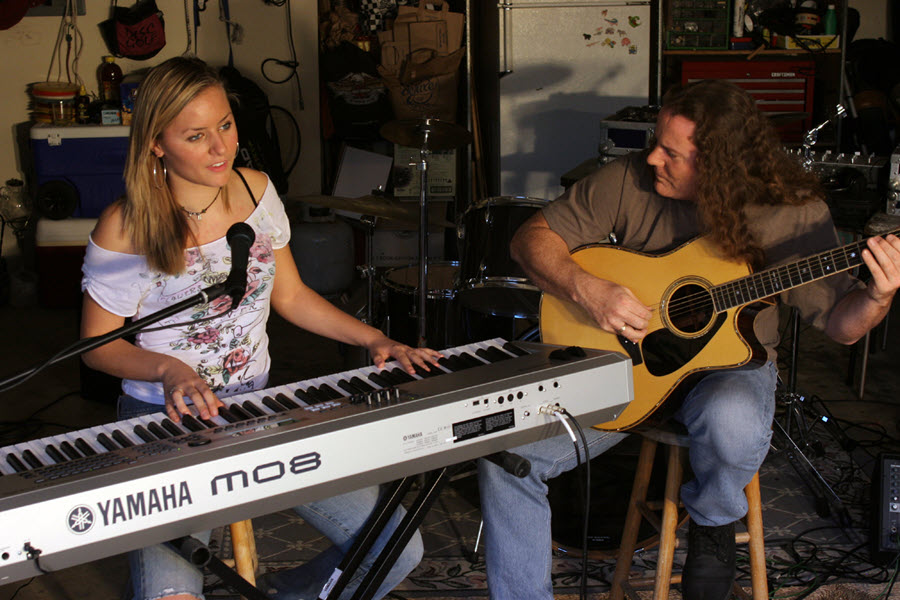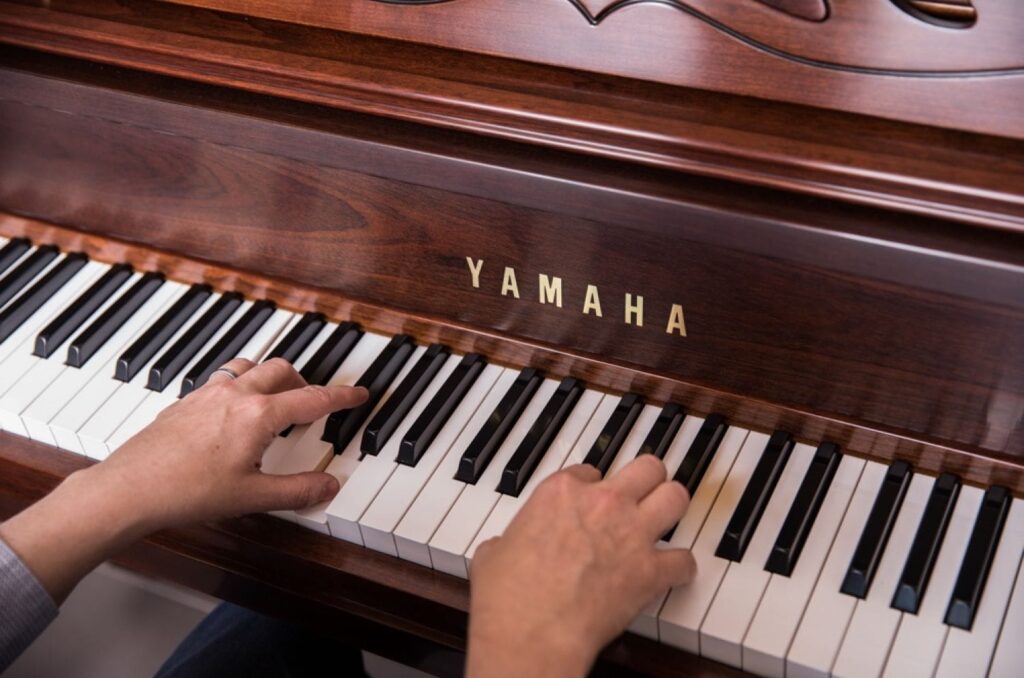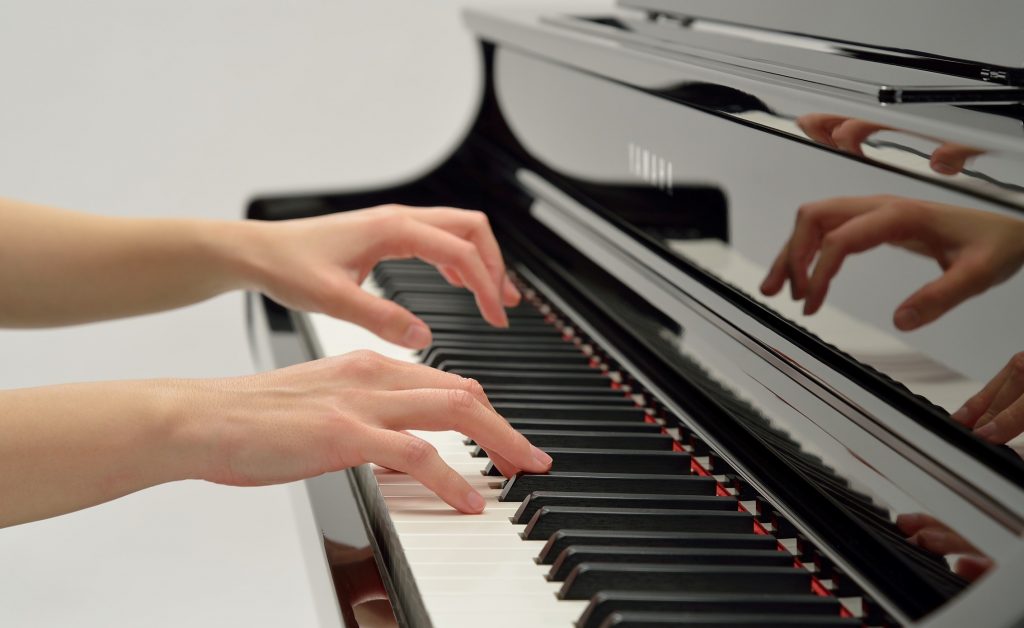Tagged Under:
Exploring Latin Rhythms
Add authentic accompaniment for bossa nova, samba, salsa and more.
The term “Latin music” actually encompasses a variety of genres, the most popular of which are bossa nova, samba and salsa. All feature percussion instruments such as congas, timbales, shakers and tambourine. There are a number of common rhythm patterns they play, and both keyboardists and guitarists draw from them to create their accompaniment parts. (Note: If you’re using a digital keyboard, you’ll probably want to set it to an acoustic piano sound since most Latin music incorporates actual piano, as opposed to electric piano, organ or synth sounds.)
Here are five of the most universal patterns utilized in Latin music. The first one, called a 2-3 son clave, has two strikes in the first bar and three in the second. (Note that each example is played twice in the accompanying audio clip.)

Here’s a slight variation that makes the first bar more syncopated by offsetting the second strike to the and of 3:

This next pattern flips the groupings into a 3-2 son clave:

Or we can choose to make the second bar more syncopated, like this:

This last pattern is taken from a common guitar comping figure heard in many bossa nova performances. Notice how it is syncopated after the first two claps:

Armed with this knowledge, let’s explore some cool comping patterns.
Bossa Nova (Right-Hand Chords)
The Bossa Nova style first became popular in the 1960s with tunes like “The Girl From Ipanema.” A soft, jazzy style of music based on the samba, a Bossa Nova harmony uses many jazz color tones, along with sophisticated voicings (groupings of notes to form chords).
The following examples play a C 6/9 chord, using two possible right-hand voicings. They will all work well when you are playing with a bass player. This first one uses the 2-3 son clave rhythm described above:

Here is the same chord progression, this time played as a 3-2 son clave:

Finally, here it is played with the bossa nova guitar comping pattern described above:

Be sure to try these patterns with other chord qualities and voicings.
Bossa Nova (Two-Hand Chords)
You’ll get a fuller sound if you play voicings using both hands. Here is the same selection of patterns spread across both hands:



Try practicing the same rhythms with these other chord quality voicings:

Bossa Nova with Bass and Chords
Often you will need to play the bass line yourself, whether you are playing solo, or accompanying a singer or other instrumentalist. Here are two common bossa bass figures, using only the root and the fifth of the chord:

When you combine this bass line with the right-hand chord progression and play it in the rhythms described above, this is what you get:



Montunos (Chord Outlining)
Salsa music requires a very different approach. In this highly rhythmic dance genre, the piano most often outlines the chords using arpeggiated patterns (playing through the chord tones one note at a time). These patterns are commonly called montunos.
Here is a simple chord progression, followed by how we’ll think of the chords rhythmically:

Syncopation (emphasizing the off beats) is an important element of a piano montuno, and montuno patterns are often played by both hands, as in this next example, played at both slow and fast tempos. Note how, in Bars 3 and 4, the right part is moved up to another chord tone in order to create a nice harmonized figure.

Another cool approach is to vary the right hand part more, perhaps adding some contrary motion, as in the first two bars of the following example, again played at two different tempos:

In the second half of the example, some select notes are doubled as octaves, which adds strong accents to the rhythm. Montunos using octaves in the right hand are very commonplace.
Montunos (Vamps)
Many Latin tunes will have long sections that stay on a single chord — something that’s called a vamp. Vamps allow you to create some interesting patterns that imply additional chords like this classic one, which moves downward from the root through the major-seventh, to the natural seventh, and into the sixth:

The first two bars has the hands playing together; the second two use an octave-based figure in the right hand to complement the basic pattern.
This next pattern moves upward from the fifth to the flat sixth and into the natural sixth, and then back down, using strong octave accents:

Notice that the left hand does not play exactly the same notes as the right hand. That’s perfectly acceptable, but it’s important to play them in the same exact rhythm so your part is rhythmically tight — a staple of salsa.
All piano and bass played on a Yamaha P-515; percussion from Steinberg Cubase drum loops.
Check out our other Well-Rounded Keyboardist postings.
Click here for more information about Yamaha keyboard instruments.














